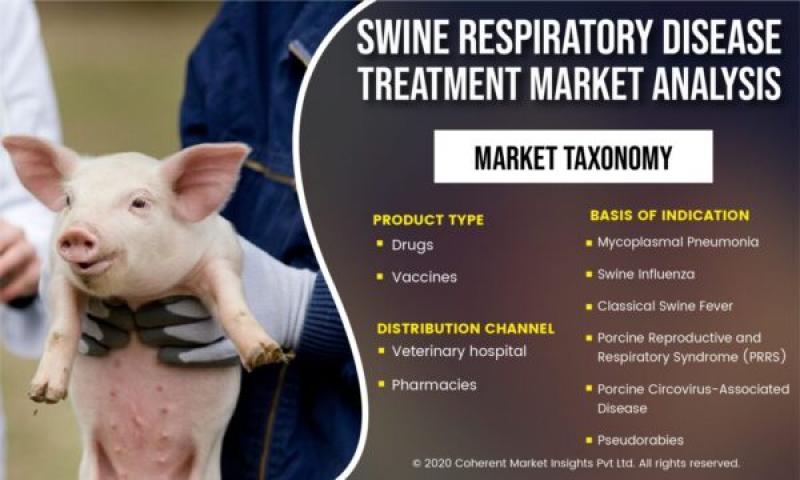Swine respiratory diseases continue to pose a significant challenge to the global swine industry. These diseases can cause substantial economic losses due to reduced production efficiency, increased mortality rates, and the cost of treatments. However, there is hope on the horizon as the swine respiratory disease treatment market experiences significant advancements and innovation.
Understanding the Scope of the Problem
Swine respiratory diseases encompass a range of illnesses caused by viral, bacterial, and environmental factors. Pneumonia, caused by pathogens like Actinobacillus pleuropneumoniae and Mycoplasma hyopneumoniae, is a common affliction. Additionally, influenza viruses and porcine reproductive and respiratory syndrome virus (PRRSV) contribute to the complexity of the issue.
These diseases affect pigs of all ages, with young pigs being particularly vulnerable. Infection not only causes suffering but also leads to financial losses for farmers. The need for effective treatment and prevention strategies is evident.
The Evolving Landscape of Treatment
Over the past few years, the swine respiratory disease treatment market has witnessed remarkable progress in several key areas:
1. Vaccines: Vaccination is a cornerstone of prevention and control. Advances in vaccine technology have led to the development of more efficacious and convenient vaccines. Modern vaccines offer broader protection, longer duration of immunity, and reduced side effects. They play a crucial role in preventing viral infections like PRRSV and influenza.
2. Antibiotics: Antibiotics have traditionally been used to treat bacterial infections in swine. Ongoing research aims to develop more targeted and effective antibiotics while also addressing concerns about antibiotic resistance and residues.
3. Diagnostic Tools: Early detection is essential for managing swine respiratory diseases effectively. Rapid and accurate diagnostic tools, such as PCR tests, have become more accessible, allowing for prompt treatment and containment of outbreaks.
4. Management Practices: Improved biosecurity measures, ventilation systems, and housing conditions are essential components of a comprehensive approach to disease prevention. These practices minimize stress on the animals and reduce the risk of respiratory infections.
5. Alternative Therapies: Some researchers are exploring alternative treatments, including probiotics, prebiotics, and herbal remedies, to bolster the swine immune system and reduce disease susceptibility.
The Way Forward
The future of swine respiratory disease treatment looks promising. Advances in genomics and data analytics are expected to lead to more targeted treatments and personalized approaches for disease management. Additionally, collaborations between researchers, veterinarians, and industry stakeholders will be crucial in driving innovation and finding holistic solutions.
While progress is being made, challenges remain. The emergence of new strains of pathogens, changing environmental conditions, and evolving production practices require ongoing vigilance and adaptation. Regulatory agencies also play a crucial role in ensuring the responsible use of treatments and the protection of animal health.
In conclusion, the swine respiratory disease treatment market is in a state of continuous evolution. The combination of improved vaccines, diagnostics, management practices, and alternative therapies is providing hope for a future where swine respiratory diseases can be effectively managed, reducing economic losses and improving the well-being of these essential livestock animals. The collaboration between the swine industry and the scientific community will be instrumental in realizing this vision.
Read More….
Dental Bone Graft and Substitutes Market
